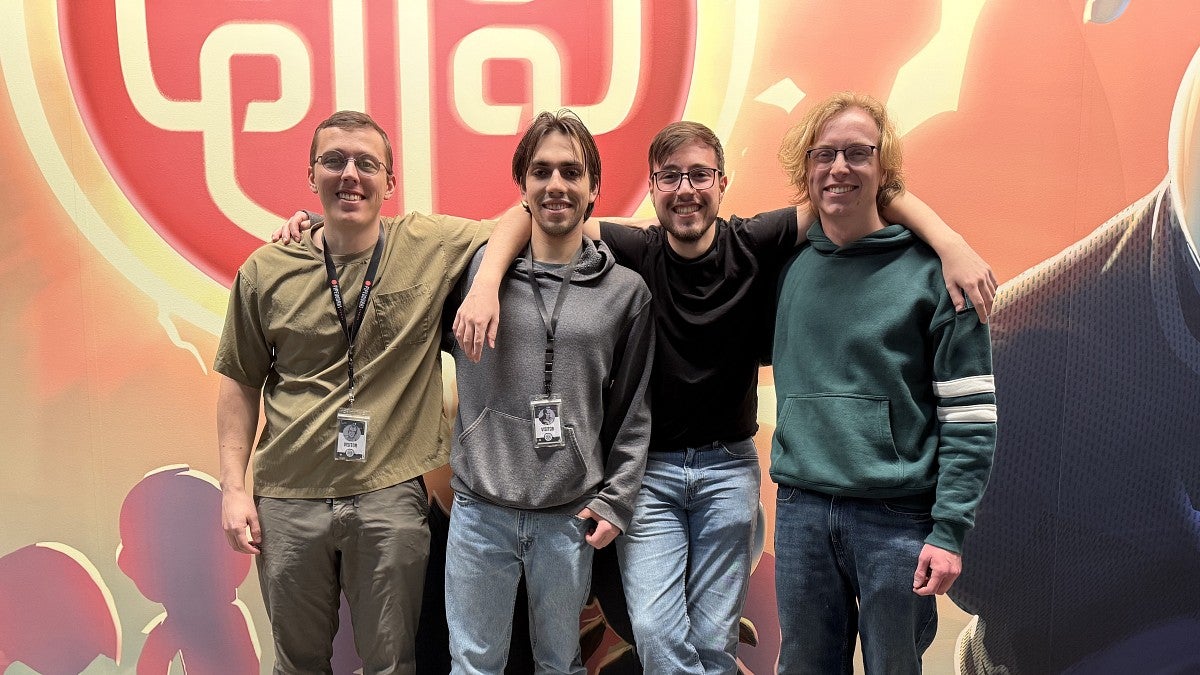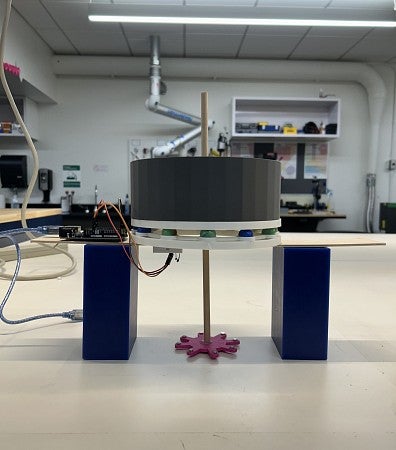
A group of computer science students helped develop a Pipeworks video game, assisted with computer simulations for the Pacific Northwest National Laboratory and helped Intel figure out how to limit its carbon emissions during a new course offered by the School of Computer and Data Sciences (SCDS).
In a capstone course piloted by professors Hank Childs and Eric Wills, fifteen students in the College of Arts and Sciences worked on real-world projects under the mentorship of industry professionals from some of the Pacific Northwest’s most prestigious tech workplaces.
The experiential learning course was designed to give students an opportunity to take on ambitious independent projects, connect with industry professionals and explore new technical skills.
“This class is an opportunity for students to get industry experience and build a significant piece of software under industry membership that can become either part of their portfolio in some cases or an important resume line in the cases where the software may not be publicly available,” Wills said.
One student team took on the challenge of investigating how companies like Intel can limit their carbon emissions. By analyzing the conditions under which running a computer program produces the least amount of carbon, the group was able to put together a dashboard to analyze company activity and provide recommendations for the most environmentally friendly ways to undertake necessary computer operations.
“When you're in a traditional class, you're often just solving algorithms or doing something on a pretty simple scale,” said Dax Lynch, one of the students who partnered with Intel. “But when you're working on an industry project, you have to wrangle all these different technologies and do research on things that you've kind of never heard of before, then pull everything together into some kind of structure to have a nice end product.”
Despite the challenges they faced in utilizing unfamiliar technology and taking on unusually large projects, each group produced a valuable end product.

The group partnering with the Pacific Northwest National Lab worked on a digital twin—a computer simulation of a real-world system—of a hydroelectric dam to support the lab’s internal analytics and allow engineers to work on digital simulations of hydroelectric turbines.
The final group, which worked with the game studio Pipeworks, contributed to an original game using industry standard tools and computing language. Students worked in the company’s Eugene office, where they were exposed to the sorts of development processes that are otherwise closely protected secrets among game studios.
A few students worked independently on projects of their own. Fourth-year computer science major Anna Finlay explored a coding language she had never worked with before to make an iPhone-compatible version of the game Minesweeper, which she plans to publish on the app store.
Post-baccalaureate student Adrian Heider pursued a project he had been dreaming up for months prior. His program, Vizzi, uses Apple Vision Pro to help blind and low-vision individuals do things like navigate from one place to another safely. The program assists with directions, avoiding obstacles, reading signs and more. Heider plans to continue developing his project into a nonprofit organization.
Childs noted that the class was part of a broader SCDS initiative to expand experiential learning opportunities for students. Other efforts have included hackathons and helping students connect with internships.
“Capstones are special because they give students the opportunity to apply everything they’ve learned in a single, meaningful project that culminates their college experience,” he says. “But traditionally the burden has been on students to define their own direction and find a mentor. This capstone class addressed that challenge by offering industry-sourced projects that bridged the gap between academic study and professional practice."
The response from students in the class was overwhelmingly positive. “This class was one of the best experiences I've had at the University of Oregon so far,” reports aspiring software engineer Ryan Helms. “Getting to work in the industry was eye-opening. It's given me more confidence about going into the workforce after I graduate, knowing what the environment might look like and having been able to meaningfully contribute to a project.”
—By Evan Ney, College of Arts and Sciences
